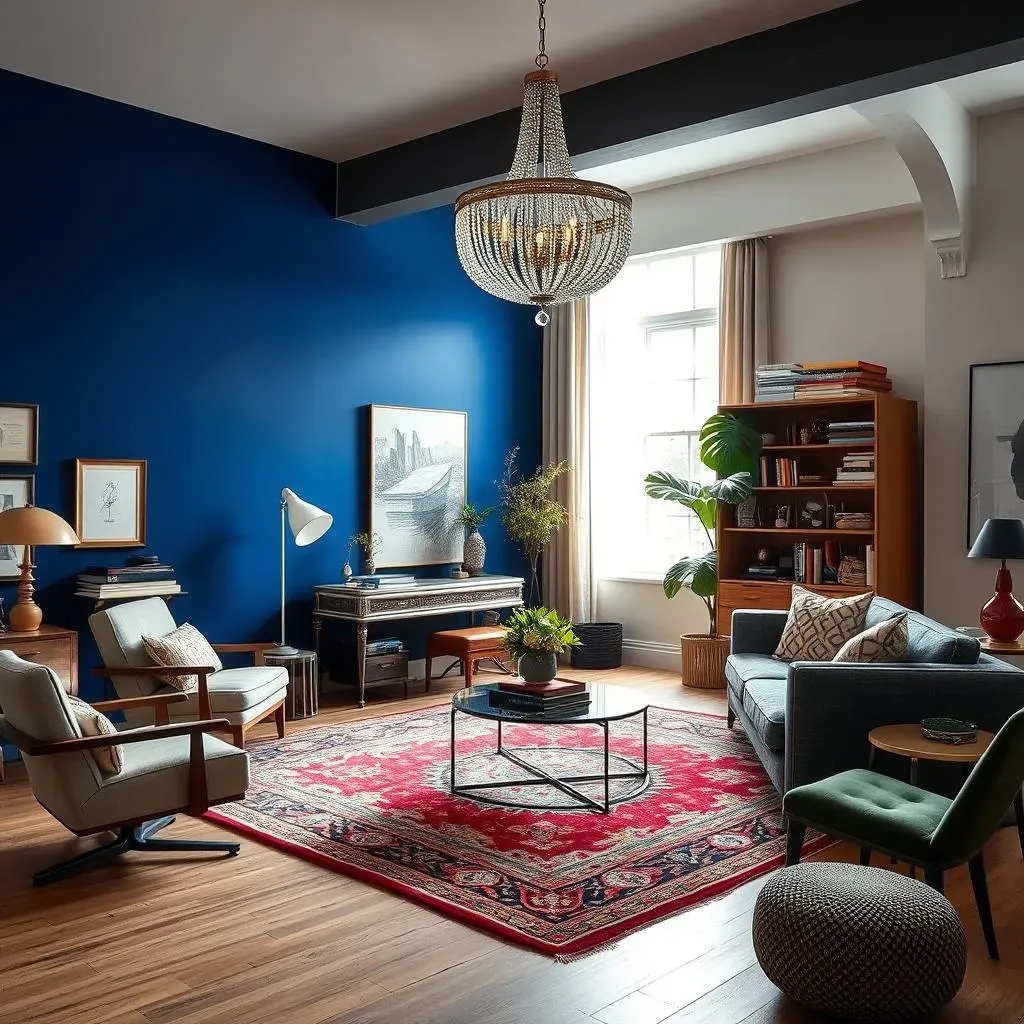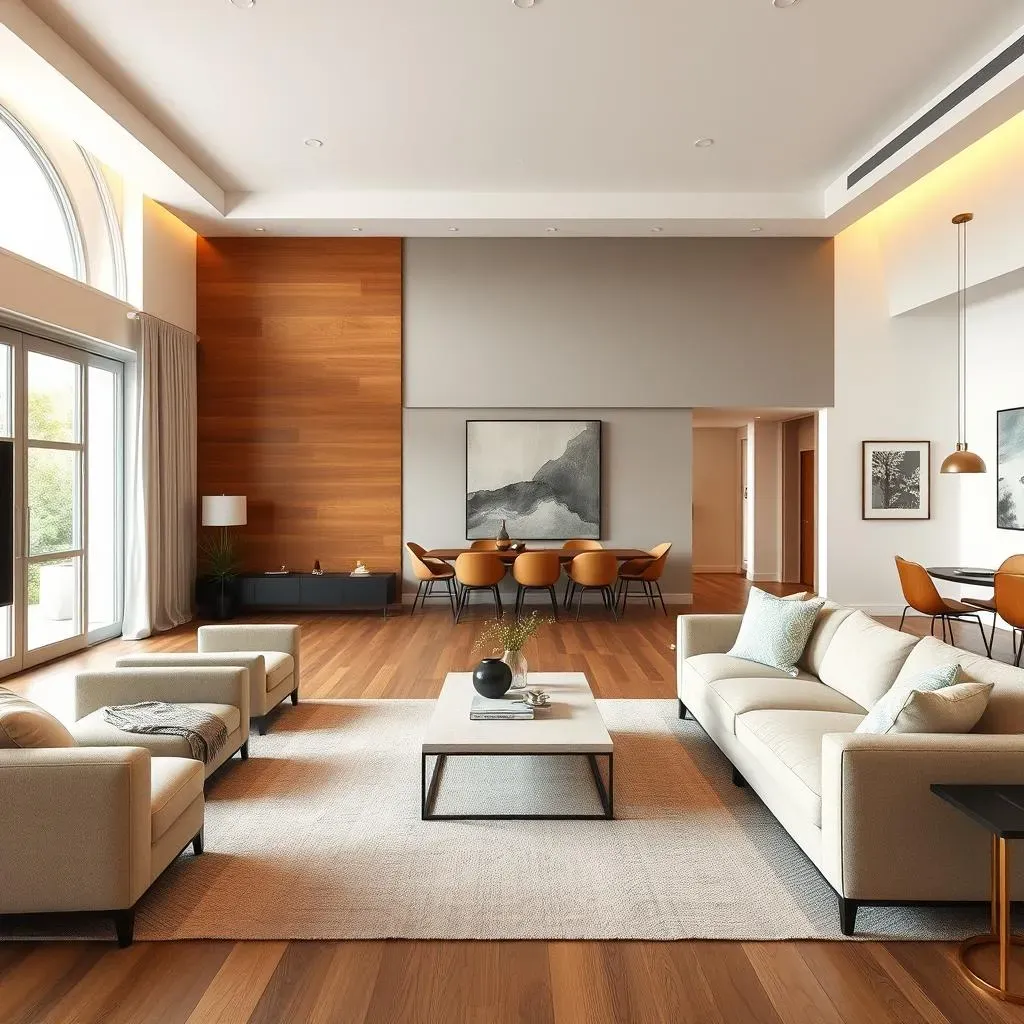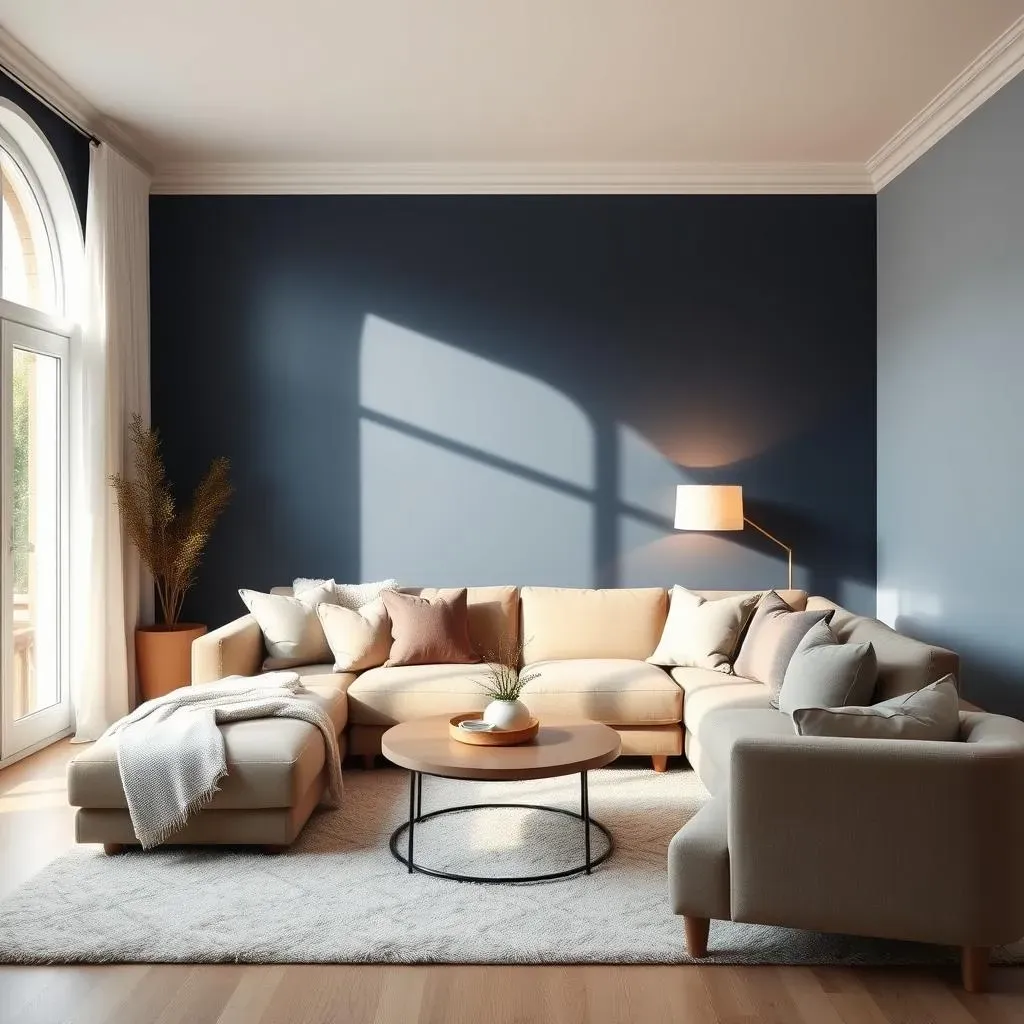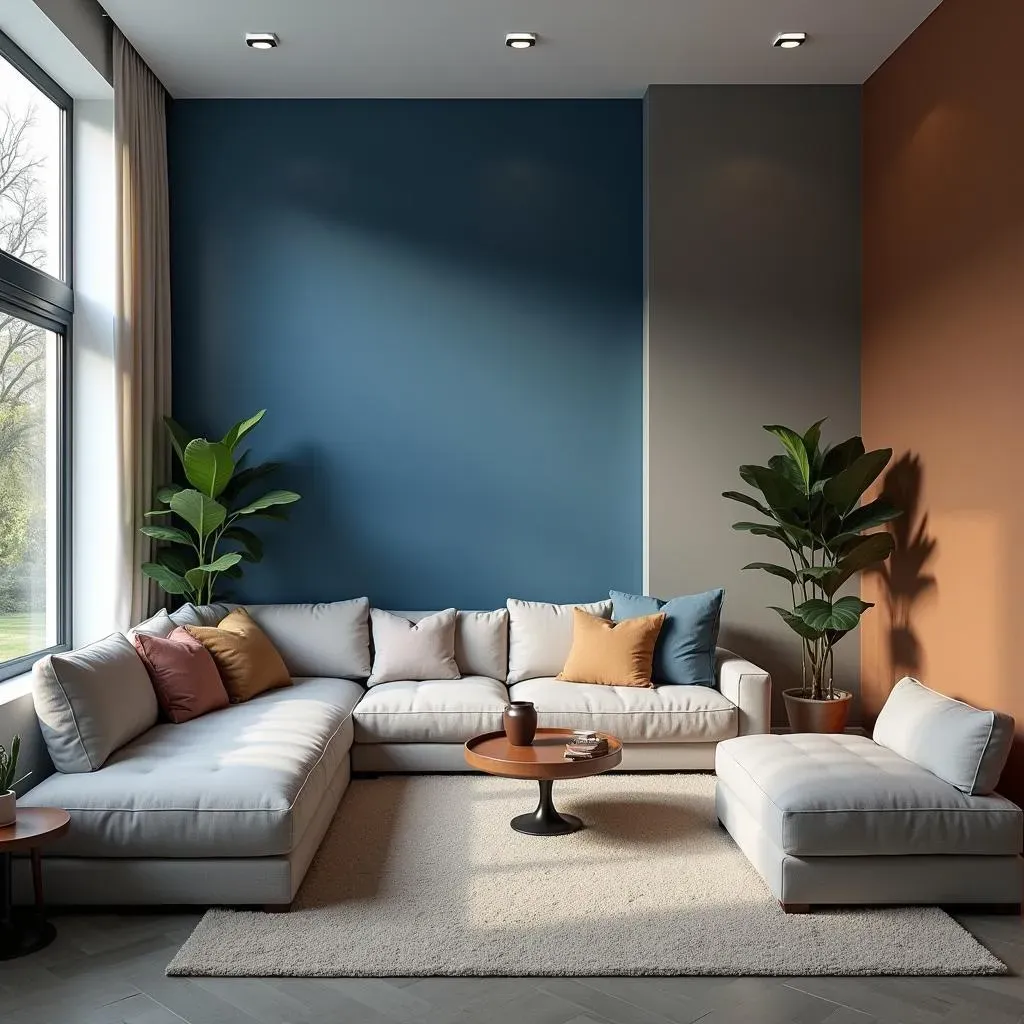Table of Contents
So, you're thinking about accent walls, huh? Maybe one isn't enough. You're eyeing a second wall, wondering if you can pull off the bold move of having 2 accent walls. It's not as simple as just slapping paint on a couple of surfaces. We’ve all seen those rooms where the accent wall looks like it's fighting with the rest of the space. And, yeah, two could potentially be twice the trouble. But fear not, design adventurer! This article isn't about telling you 'no'. Instead, we'll explore if having two accent walls is a good idea for your space, and when it could be a stylish design choice. We'll look at how to make it work, what to watch out for, and give you some ideas to avoid a decorating disaster. Get ready to rethink how you use color and texture in your rooms. Let's figure out how to make those 2 accent walls sing, not scream.
The Lowdown on Accent Walls

The Lowdown on Accent Walls
What's the Big Deal?
Okay, so you've probably seen an accent wall before, right? It's that one wall in a room that's different from the others. Maybe it's a different color, a cool pattern, or even a different material like wood or brick. The whole point is to make it stand out, to grab your attention. It's like the rockstar of the room, meant to be noticed. But why do we even bother with them? Well, it's all about adding some spice to a room, creating a focal point, and showing off your style without going overboard and redoing the whole space.
Think of it like this: your room is a stage, and the accent wall is where the main actor performs. It's the spot where your eyes naturally land when you walk in. It's not just about a random color; it's about making a statement.
Why Use an Accent Wall?
So, why not just paint every wall the same color? Well, an accent wall can do a few cool things. It can make a small room feel bigger by drawing your eye to the far wall. It can also create a cozy, intimate feel in a large room, by making the space feel less vast and overwhelming. It’s also a great way to experiment with a bold color without committing to it on every surface. Plus, it allows you to highlight a specific feature, like a fireplace or a cool piece of art. It's all about intentional design, not just filling up space.
It's like adding a single, bright flower in a vase of greenery—it's a touch of the unexpected and makes everything else look a little bit better too.
Accent Wall Benefit | How it Works |
|---|---|
Creates a focal point | Draws the eye to a specific area |
Adds depth and dimension | Makes a room feel more interesting |
Allows for bold color use | Without overwhelming the space |
Highlights architectural features | Draws attention to unique elements |
Accent Walls: The Good, the Bad, and the Ugly
Now, don't get me wrong, accent walls aren't a magic fix for every room. There are times when they can look a bit off, like when the color clashes with everything else, or when it's put on a wall that makes no sense. It's like wearing a sparkly hat to a funeral – it's just not the right time or place. A badly done accent wall can make your room feel unbalanced, awkward, or even smaller. The key is to be thoughtful, to plan, and to make sure it fits with the overall style of your space.
Remember, it's not just about picking a color you like; it's about picking a color that works with everything else.
Two Accent Walls: Yay or Nay?

Two Accent Walls: Yay or Nay?
The Double Trouble Question
Alright, let's get to the heart of the matter: Can you actually have two accent walls in one room? The short answer is: maybe. It’s not a hard no, but it’s also not a free pass to go wild with paint. The real question isn't *can* you, but *should* you? Most of the time, one well-placed accent wall is enough to do the job. But, there are those special cases where two can work. Think of it like this, one accent wall is like a lead singer in a band, and two accent walls are like two lead singers, they both need to be amazing and work together, or it will be a mess.
It's not about doubling the drama, it's about doubling the design impact, and if you do not have a plan, then you have a problem.
When Two Walls Might Work
Okay, so when does it make sense to have two accent walls? Well, if you have a large, open space, two accent walls can actually help define different zones. Imagine a big living room that flows into a dining area. You could use one accent wall in the living area to highlight the sofa, and another in the dining area to frame the table. This helps create two distinct spaces within the same room. Also, if your room has two architectural features that you want to emphasize, like two fireplaces, then two accent walls could work. But, they need to be in balance and complement each other and the rest of the room. The key is to make sure they don’t fight each other for attention, but rather work together to create a cohesive look.
It's like a well-choreographed dance; each wall has its own role, but they move in harmony.
The Pitfalls to Avoid
Now for the warnings, because it’s not all sunshine and rainbows. The biggest mistake you can make is creating a chaotic and unbalanced room. If your two accent walls are too close together, or if they compete with each other in terms of color or pattern, the room can feel jarring and overwhelming. Also, if your room is small, two accent walls will make it feel even smaller and more cramped. It's like trying to fit two giant personalities into a tiny car – it just doesn't work. The other thing to keep in mind is that if you're going with two bold colors, the room could feel too busy or even aggressive. It's important to be mindful of the overall mood and feel of the space. You don't want to create a room that's visually exhausting.
Remember, subtlety can be a superpower.
Two Accent Walls | When It Works | When It Doesn't |
|---|---|---|
Large, Open Spaces | Defines different areas | Small, cramped rooms |
Two Architectural Features | Highlights unique elements | Too close together |
Complementary Colors | Creates a cohesive look | Competing colors or patterns |
Intentional Design | Enhances the space | Creates a chaotic feel |
Making Two Accent Walls Work For You

Making Two Accent Walls Work For You
Choosing the Right Colors
Okay, so you're brave enough to try two accent walls. The first thing you need to think about is color. You can't just pick two random colors and hope for the best. Think of your room as a painting, and you're the artist. The colors need to work together, not fight each other. A good way to do this is to pick one color and then choose a shade of that color for the second wall. For example, if you have a deep navy wall, you could go with a lighter blue on the other wall. Or you could use a neutral color for one wall, like a light gray or beige, and then use a bold color for the other. You can also use colors that are next to each other on the color wheel; these are called analogous colors, and they usually look great together. The key is to create a balance, so that one wall doesn't overpower the other.
It's like choosing the right spices for a dish; they need to complement each other to create a delicious flavor.
Placement is Key
Now that you've got your colors sorted, let's talk about where to put those accent walls. You can’t just pick any two walls. The way you place them will have a huge impact on how the room feels. If you have a long, narrow room, putting accent walls on the short ends can make the room feel wider. If you have a large, square room, you can use accent walls to create a focal point and make the room feel cozier. If you have a room with an architectural feature, like a fireplace or large windows, you can use the accent wall to highlight those features. It’s all about being intentional and thinking about how you want your eye to move through the room.
It's like arranging furniture; where you put things is just as important as what you put in the room.
- Opposite Walls: Can create a sense of balance in a room.
- Adjacent Walls: Works well in open-concept spaces to define different areas.
- Walls with Architectural Features: Highlights fireplaces, windows, or built-ins.
Balancing Act
Ultimately, having two accent walls is all about balance. It's not just about the colors or where you put them. It's about how they work with the rest of your room, the furniture, the art, and the overall vibe. You don't want the walls to compete with each other or the rest of the room. You want them to enhance it. Think about the textures you're using, too. If you have two bold colors, you might want to use softer textures in the room, like a plush rug or velvet pillows. If you have two walls that are different colors, you might want to use the same texture throughout the room to tie it all together. You need to step back and look at the big picture, and make sure everything is working together. If you're not sure, start with one accent wall, and then add the second one later if you feel like it.
It's like conducting an orchestra; every instrument needs to play its part to create a beautiful symphony.
